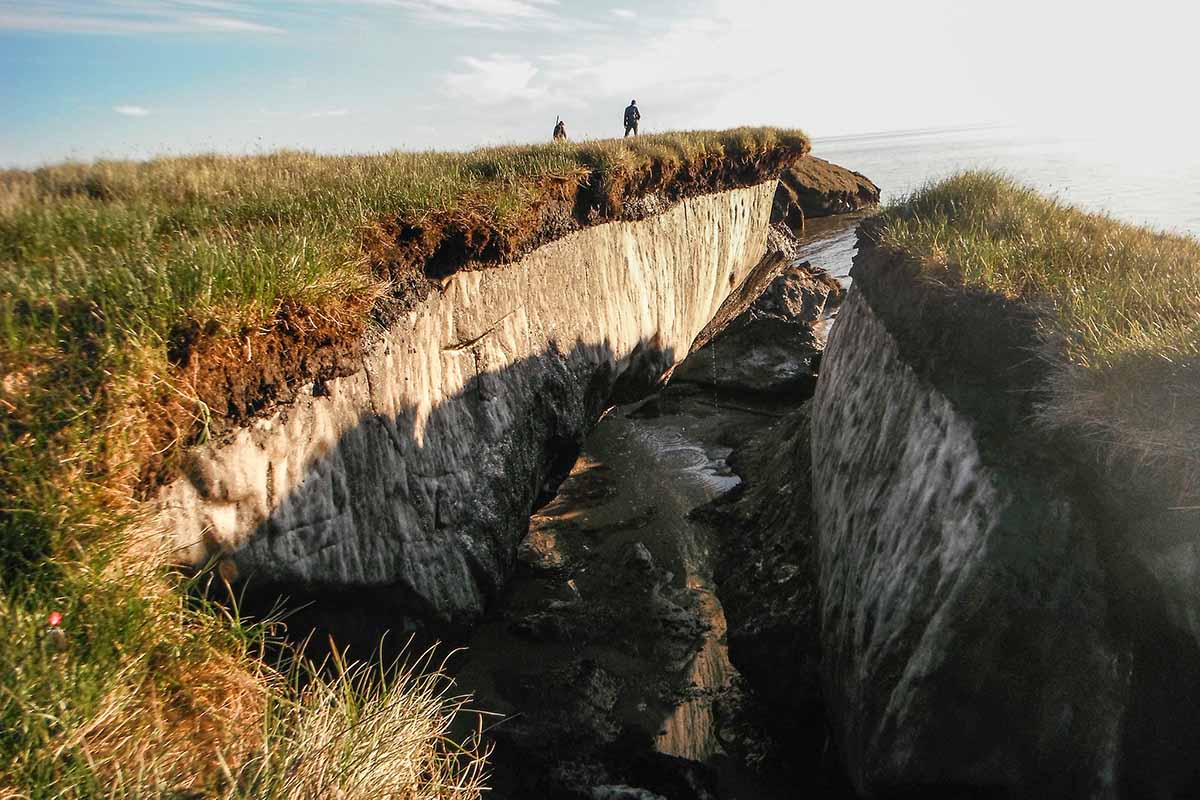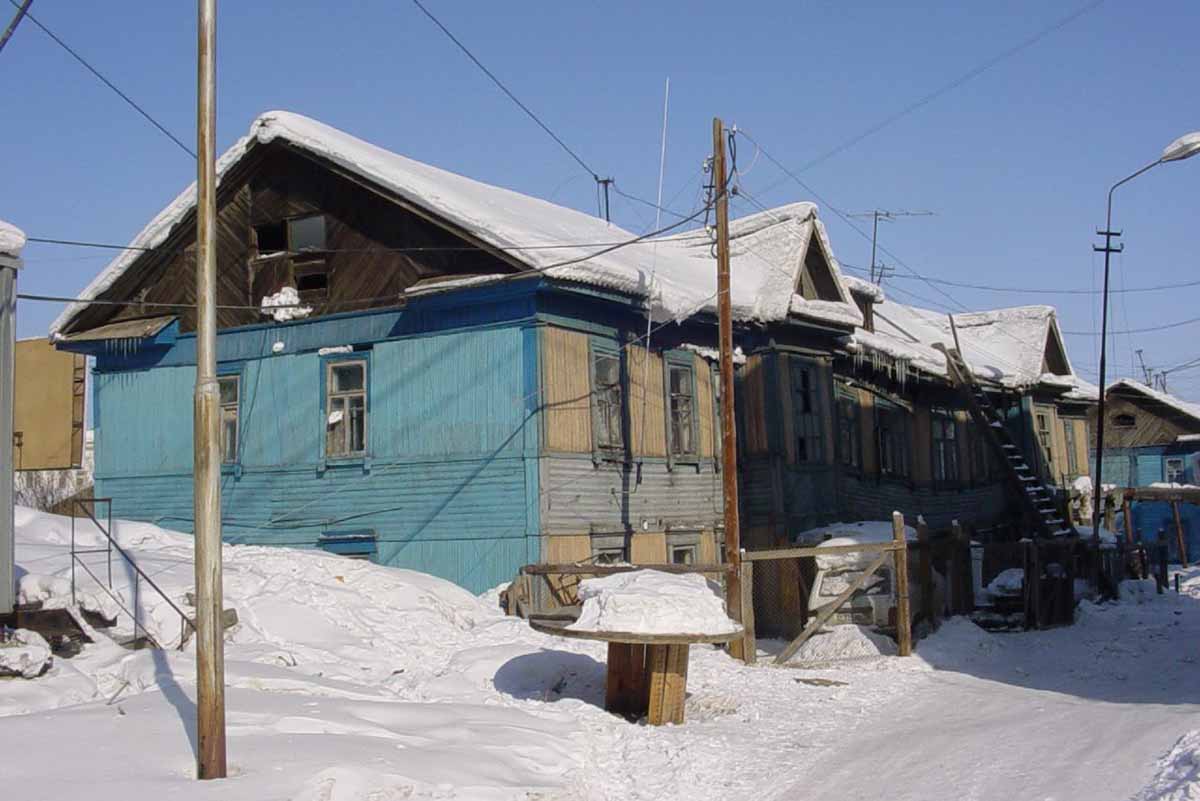
Permafrost: the challenge of construction when the ground is moving under your feet
29 of August of 2023
Yakutsk is located in the eastern part of Siberia, less than 500 kilometers from the Arctic Circle in the Lena River Valley. This Russian city is famous for being one of the coldest in the world, where the thermometer has dipped to -63 °C and the calendar is divided between dark winters and summers when the sun barely sets.
Yakutsk has a climate with extreme temperatures. And yet, the main risk for this city is not the cold but the thaw. It is the largest city on the planet that’s built on permafrost, the layer of soil that remains frozen and is now threatening to melt due to global warming.
The loss of permafrost is a threat to the environment, local communities’ ways of life, and numerous infrastructures, whose foundations are in danger due to the ground on which they stand moving. To prevent this, global warming must be curbed, and infrastructures must be adapted to the new climate reality.
Frozen ground
It is estimated that there are more than 23 million square kilometers of permafrost in the northern hemisphere today. That’s 23 million square kilometers of a soil layer that has remained frozen for at least two years. Most of it is in the Arctic regions, in areas of Canada, Alaska, Greenland, or Siberia near the pole – as is the case of the ground that remains frozen under Yakutsk.
The properties of this soil vary from place to place. It is generally made up of a combination of earth, rock, sand, minerals, organic carbon, and animal and vegetable remains that are held together by ice. In some areas, permafrost has been frozen for hundreds or even thousands of years.

Coastal erosion reveals the permafrost in Alaska. USGS (Flikr)
However, global warming threatens to upset this balance: as temperatures rise, the permafrost ice melts. It does so first in the most superficial layers and later in the deepest, releasing large amounts of carbon dioxide and methane, greenhouse gases that accelerate climate change (which in turn leads to the melting of permafrost, thus creating a vicious cycle).
The melting permafrost also causes other problems, such as increased erosion, seepage into lakes and rivers, and soil instability. People who live in cities and towns built on permafrost are seeing their roads and buildings sinking or falling apart, so they have started a race to find solutions that are based on both science and engineering.
The challenge of building on permafrost
The Cold Climate Housing Research Center (CCHRC), a non-profit organization that seeks to develop efficient and sustainable construction technologies for the regions around the poles, has two main tips for anyone who wants to build houses on permafrost.
The first one is simple: Don’t do it! “Houses are designed assuming that the foundations are permanent and stable, and permafrost is not. When it thaws, it causes the foundations to move, which can create small problems like cracks or major structural problems that lead to buildings sinking,” they explain.
However, taking this advice is not always possible. In cities like Yakutsk, much of the surface is composed of permafrost. And the city keeps growing, mainly due to mining activity and the presence of scientists and engineers who are looking for solutions to different climate change challenges.

Housing in Yakutsk. Natxo Rodriguez (Flickr).
For cases where not building is not an option, the CCHRC offers another basic rule: if it’s frozen, keep it frozen. “The big problem is that permafrost is very susceptible to construction. And when it thaws, the ground becomes unstable,” they explain. Therefore, it is essential for buildings to avoid heating the soil.
According to the CCHCR, planning the structures and designing the foundations should prioritize keeping the land at a stable temperature, harnessing the very characteristics of the climate to ensure that the soil remains frozen, and protecting vegetation. The last of these is necessary because the topsoil protects the soil from temperature changes. If it is lost, the permafrost warms up during the summer and begins a thawing period that may also continue during the colder months.
From raised foundations to aboveground pipes
One of the rules for building cities located further north, such as Yakutsk or Noril, is to separate all the elements from the ground as much as possible. Thus, the base of the buildings is usually elevated to prevent heat from being transferred to the ground and accelerating the permafrost melting.
This is possible with foundations based on piles, formwork, or beams that raise the constructions several meters off the ground. They can be made of different materials (such as steel or aluminum) and have adjustable mechanisms so that the buildings move when the ground moves. In recent years, solutions have also been developed for adding layers of insulation so that the heat from inside does not get out.
https://www.youtube.com/watch?v=4zz6sD3zTcU
But the foundations are not the only structures that should be separated from the ground: the same is true of pipes, cables, or heating ducts, which are put in plain view in these cities and are becoming an important part of the urban landscape.
Although building construction and design is essential to ensure the survival of permafrost, maintenance also comes into play. The CCHCR offers some steps that can be carried out by residents themselves, such as keeping the bases of the houses clear so that snow and air can pass through and help the temperature stay low.
A future for permafrost
The solutions don’t end here. Prioritizing the construction of multi-family buildings and using thermosiphons (pipes installed in the ground to reduce the temperature of the permafrost during the winter and thus prevent it from getting hotter during the summer, an option that is efficient but complicated and expensive) are also being put into practice.
With temperatures rising non-stop, dealing with the permafrost melting is complicated, especially in the Arctic, a region that’s warming three times faster than the planet’s average. However, it’s not impossible. More and more initiatives are combining science and technology with local knowledge in order to maintain the permafrost that makes life possible in the coldest cities on the planet.





There are no comments yet